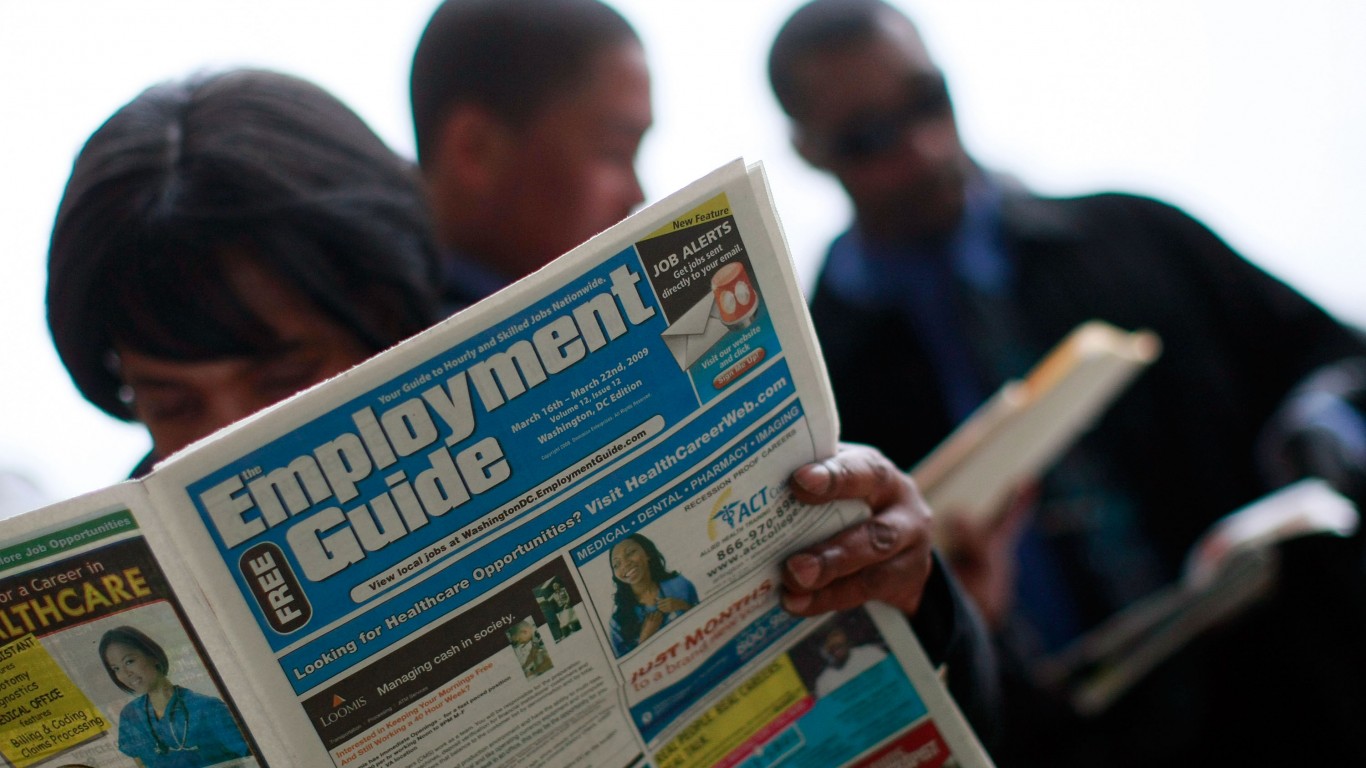
It’s the first Friday of the month, and you know what that means: Time for another Employment Situation report from the U.S. Department of Labor. The unemployment rate remains very low, but the payrolls gains are not so strong that they would press the Federal Reserve into an aggressive rate hike mode.
The official unemployment rate for August came in at 4.9%. Bloomberg and Dow Jones were both forecasting a 4.8% rate. July’s rate was 4.9%.
Nonfarm payrolls were up some 151,000. Bloomberg was calling for 175,000 with an Econoday range of 125,000 to 215,000. Dow Jones was calling for 180,000 in the August report. July’s nonfarm payrolls may have eaten into August’s gain as the number was revised to 275,000 from 255,000.
Private sector payrolls, the jobs that actually contribute to real growth, rose by only 126,000 in August. Bloomberg had a consensus estimate of 179,000 and the Econoday range was 100,000 to 195,000. July’s private sector payrolls were revised to 225,000 from the initial report of 217,000.
The workforce participation rate was flat at 62.8%. Average hourly earnings rose by only 0.1% in August, less than the Bloomberg consensus estimate of 0.2% and less than the 0.3% from July. Another spot of weakness was the average workweek, dropping to 34.3 hours after a consensus estimate of 34.5 hours from Bloomberg and after 34.5 hours in July.
What is happening here is that the labor market still looks solid but not at a rate that is an overheating employment situation. Gains in payrolls are solid, but not at a level that would force the Fed into an aggressive rate hike stance. Hourly earnings were soft, and a declining workweek is not exactly the greatest indicator of growth.
The reality is that weak manufacturing data on Thursday and a less than robust ADP payrolls report from Wednesday should have muted the expectations for the Labor Department report. Goods-producing jobs were also lower due to persistent weakness in mining (including energy) and due to weakness in manufacturing and construction.
Friday’s report should not exactly cheer a gain of 25,000 in government payrolls. As a reminder, it takes several taxpayer jobs from the private sector to theoretically pay for one government job.
Stocks were down marginally ahead of the Employment Situation report. At the opening bell, the Dow futures were up over 60 points and the S&P 500 was up eight points. Right now the market wants numbers that are indicating positive growth, but growth that is less than robust so that Janet Yellen and the rest of the Fed won’t actively try to go out on an interest rate hike rampage.
100 Million Americans Are Missing This Crucial Retirement Tool
The thought of burdening your family with a financial disaster is most Americans’ nightmare. However, recent studies show that over 100 million Americans still don’t have proper life insurance in the event they pass away.
Life insurance can bring peace of mind – ensuring your loved ones are safeguarded against unforeseen expenses and debts. With premiums often lower than expected and a variety of plans tailored to different life stages and health conditions, securing a policy is more accessible than ever.
A quick, no-obligation quote can provide valuable insight into what’s available and what might best suit your family’s needs. Life insurance is a simple step you can take today to help secure peace of mind for your loved ones tomorrow.
Click here to learn how to get a quote in just a few minutes.
Thank you for reading! Have some feedback for us?
Contact the 24/7 Wall St. editorial team.


